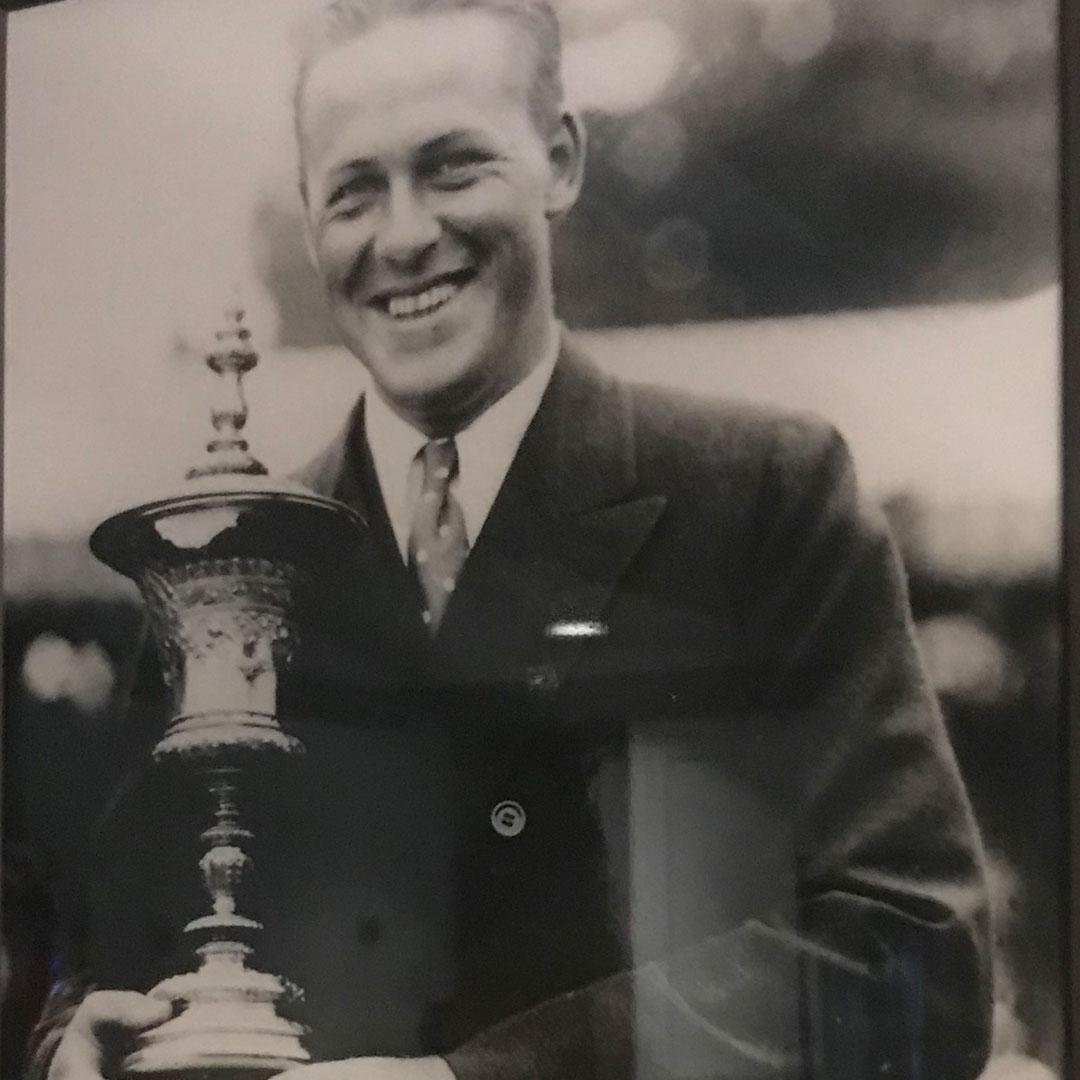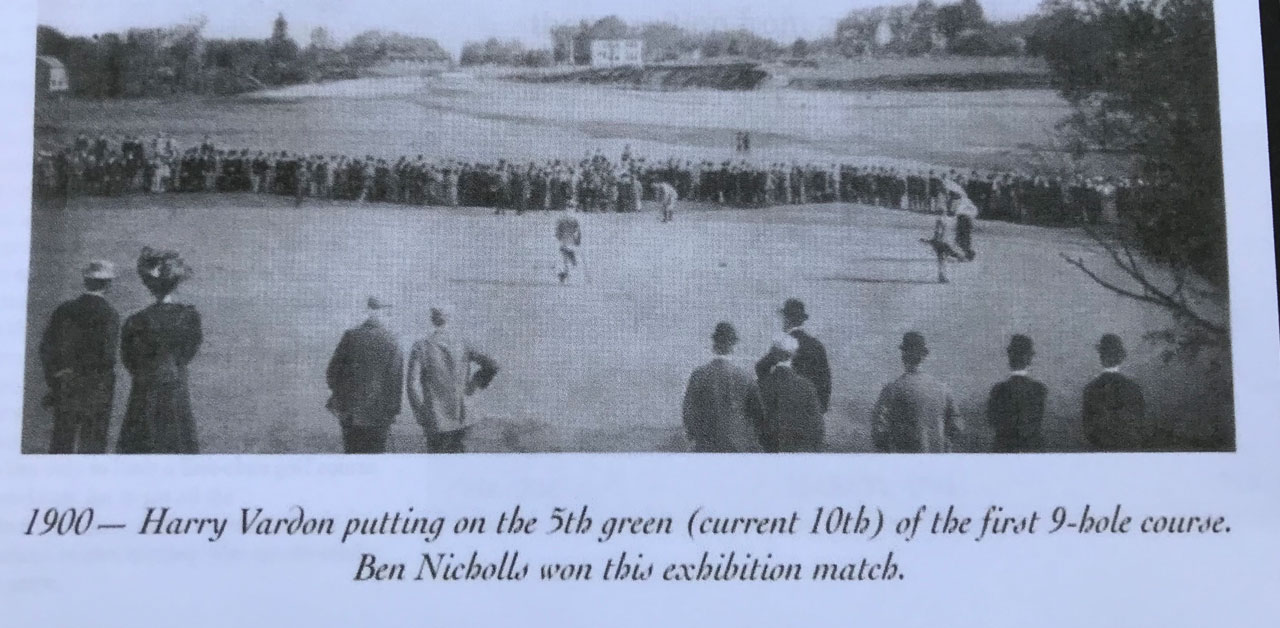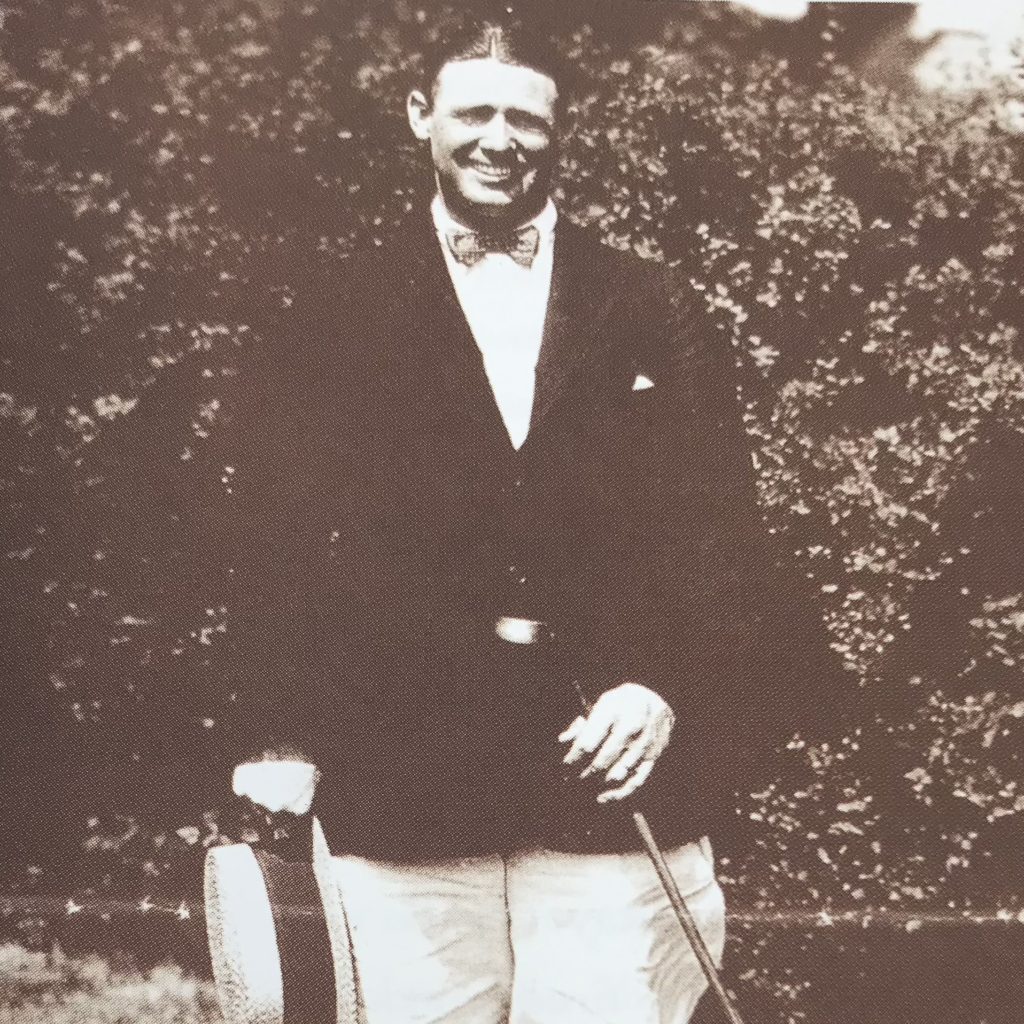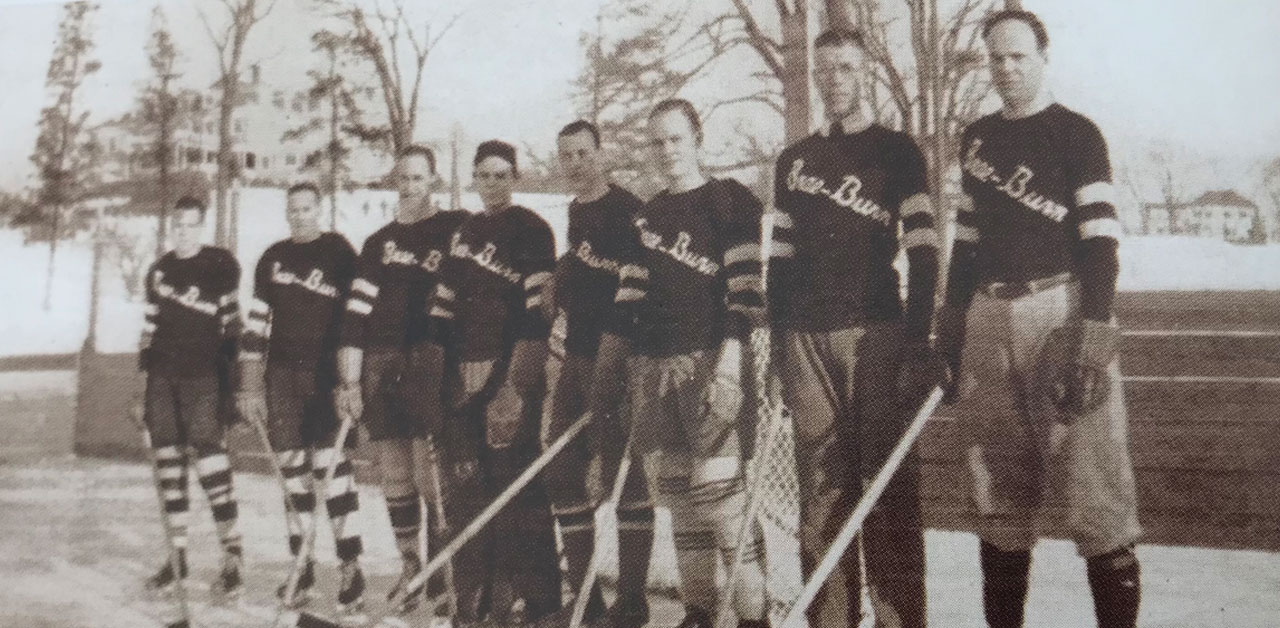The Massachusetts Amateur has returned to Brae Burn Country Club in West Newton for the 11th time in its history, and its first since 1991. This total pulls it even with The Country Club (Brookline), which is preparing to host the 2022 U.S. Open.
The first nine holes on the current Brae Burn property were constructed in 1897. After that, the club expanded to 18 holes. Donald Ross is considered the course architect of the modern 18-hole layout, which has kept its layout since it was redesigned in 1928 for the U.S. Amateur. Only a few alternations to tee boxes and greens have been done.
As we kick off the 113th playing of the Mass Amateur, here are 10 things you may not have known about Brae Burn.
Before the club was founded, a meeting was held at the home of George Frost. According to the club’s centennial book published in 1997, Mrs. Frost was asked to contribute to the meeting and was quoted as saying, “You have meadows and you have a brook, but don’t call it Meadowbrook. Golf is a Scottish game. Make it Scotch, call it Brae Burn.”
The word ‘Brae’ in Teutonic (West Germanic) language means the steep bank bounds a river valley. The words ‘Burn’ (Common Teutonic in old English) means a spring, foundation; a stream or river. In later use: A brook.
Much credit to the club’s notoriety comes from the talents of Scottish brothers Alex Ross and Donald Ross. When Donald Ross arrived in Boston in April 1899 to become the head professional at Oakley Country Club in Watertown, he recruited his younger brother Alex to become Brae Burn’s first professional (1902-14).
Alex was an accomplished golfer (1907 U.S. Open champion; 6-time Mass Open champion). Donald was also a successful golfer, but by the mid-1910s, was retained throughout the U.S. and as far as Canada and Cuba to either design or enhance a golf course.
Ross arrived at Brae Burn after its first 18 holes were developed and laid out several holes on newly acquired land from Holes 2-6.
Together, the Ross brothers’ collective influence on the club helped bring events like the 1906 U.S. Women’s Amateur, 1919 U.S. Open, and 1928 U.S. Amateur to the club within its first three decades of existence.
“A lot of courses were getting Scottish architects who were coming to the U.S.,” said Kevin Mendik, the club’s present-day historian. “They wanted one of those named architects to put their imprint on Brae Burn and bring it up to a championship course.”
Golf legend Walter Hagen became the first person to win the U.S. Open multiple times, taking home his second title in 1919 at Brae Burn with a four-round score of 301. That year marked the first time the U.S. Open had four rounds played over the course of three days. However, there was also another day added for a playoff, where Hagen edged out Bay State native Mike Brady, 77 to 78.
Hagen is among the big names in golf history who have won at Brae Burn. That list includes Bobby Jones, who won the 1928 U.S. Amateur at Brae Burn, and Harriott Curtis, the 1906 U.S. Women’s Amateur champion and a member of the Massachusetts Golf Hall of Fame. Francis Ouimet, who shocked the world with his 1913 U.S. Open victory at The Country Club, also captured the 1914 Mass Amateur at Brae Burn.

However, the list of standout performances at Brae Burn also includes some underdogs.
Brae Burn also rose in stature in 1900 when Bernard Nicholls, a Boston professional, upset Harry Vardon, who was the No. 1 Player in the world, in a 36-hole exhibition match at Brae Burn’s original 9-hole course. Though Vardon often outdrove his opponent, Nicholls countered with a strong short game that allowed him to eventually pull ahead and hold off the legendary Vardon in front of roughly 500 spectators.
In 1923, Brae Burn member Karl E. Mosser won the Mass Amateur title at his home club with a 3 and 1 victory over R.W. Brown. Mosser, a team captain for Yale University, had won the Maine state amateur twice but had failed to qualify for the Mass Amateur the year prior.

Though the Donald Ross layout made Brae Burn into the championship course it is today, some of the original holes laid out by George H. Phelps still exist today, just with some variations.
Most notably are the present-day holes 1 and 18. Today’s 18th hole was the original 1st hole, but it was played in reverse, with the teeing area near the present-day 18th green. The 1st hole was the original 9th and was also played in reverse toward the clubhouse. Also, the par-4 7th was the original 2nd, the par-3 8th hole over the valley was the original 3rd, the 9th hole was the original 4th and the 10th hole was the original 5th.
“You’re literally looking out on golfing grounds that have been in continuous play since 1897,” Mendik said. “For me, that’s kind of cool.”
There have been plenty of aces over the past century-plus at Brae Burn Country Club. Two, in particular, stand out.
-In September 1909, John G. Anderson made a 328-yard hole-in-one on what was previously the 16th hole. Known then as “the Toboggan”, it was a downhill par-4 that ran down a steep hill starting near the present 8th green of the Highland Course across the present 17th to a green near the present seventh fairway. Anderson’s shot got the right roll and landed into the cup, with an elderly member standing on the green pulling the flag as he saw it roll down the hill.
–Bill Blaney, who holds the record 13 men’s Brae Burn men’s club championship titles, set an amateur course record of 67 back in 1940. He started 7th hole that day, and when he stepped up to the scenic 160-yard, par-3 6th hole, he needed a birdie to match the record. Instead, he hit a six-iron right on line, and it took two bounces and landed into the cup.

The neighboring courses in Newton almost became one back in the early 1900s. Both courses had 9-hole layouts, and according to a March 1903 version of GOLF, the official Bulletin of the USGA, the plan was to create one 18-hole course, with a subsidiary nine-hole course for beginners.
“We said no because we’re planning to become a four-season Country Club and then we’re going to be expanding our course to 18 holes,” explained Kevin Mendik.
In December 1903, the club followed through with plans to extend the course of 18 holes, with eight of nine greens already set for play. In March, the club officially changed its name from Brae Burn Golf Club to Brae Burn Country Club.
The par-3 eighth hole at Brae Burn is known for its scenic bridge carrying the players from the tee box over a valley into the green.
During the 1919 U.S. Open, Willie Chisholm topped his drive into the valley where it nestled against a rock. After multiple swats at it, he was finally holed out with a score of 18. That score still stands as a U.S. Open record for the highest score on a par-3.
While Ross receives primary credit for Brae Burn’s design, prominent architects Wayne Stiles and Geoffrey Cornish also are part of Brae Burn’s story.
Stiles, who designed Massachusetts championship courses such as Taconic Golf Club in Williamstown and Thorny Lea Golf Club in Brockton, was an early member of Brae Burn. The club does not have any drawings of Donald Ross’ designs of Brae Burn, but years ago, a hand-drawn topographical plan by Stiles was unearthed. Stiles opened his own landscape design firm in Boston in 1915 and in March of that year, drew the course as it was at the time.
“We’re lucky that Stiles did what he did in 1915,” Mendik said. “A lot of clubs didn’t pay for the plan or individual blueprints, so that was a pretty significant piece that he did and that obviously took a long time to draw.”
In the 1960s, Cornish was consulted about persistent drainage problems in front of the 11th green, which previously was a punchbowl. His solution was to bring fill over from the 12th and build a new green on top of the old one, as well as raising the surroundings.

Brae Burn also has a second course, a 9-hole layout designed in the 1920s when Brae Burn decided to expand as its membership grew to about 800. After obtaining more land from Henry B. Day, one of the founding fathers, it allowed the work to begin.
John Shanahan, the club’s original superintendent between 1902-1934, began work in 1921, and the course opened for play on September 22, 1922. Between then and 1994, the course was only called the No. 2 Course.
In 1994, the course underwent a series of upgrades, including cart paths and the movement of the 6th tee in order to help maximize the space of the practice range alongside the course. As they were reconstructing, the course was renamed the Highland Course, perhaps a more obvious Scottish reference.
The original eighth hole at Brae Burn was called Beacon Hill and is now part of the Highlands Course. Back then, one could see Beacon Hill from the tee box there, but trees now obstruct the city view.
Beginning in its early days, Brae Burn has had a year-round sports program, in addition to golf. Sports like curling and skiing were popular pursuits, but ice hockey was among the club’s most successful pursuits outside of golf.
Back then, Brae Burn had a regular schedule against college opponents from Harvard, Dartmouth, and other institutions. Its best string of success came in a stretch between 1927 and 1937, including when Brae Burn went unbeaten in its 24 matches during the 1930 season.
Fun fact, horses were responsible for clearing the ice.
